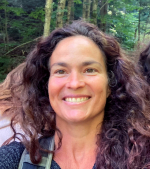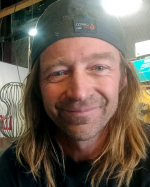![]() North Dakota has eight distinct regions. Southwestern North Dakota’s Region 8 is comprised of Adams, Billings, Bowman, Dunn, Golden Valley, Hettinger, Slope and Stark Counties. Regional and local leaders from business, arts, education, and community were recruited as Stakeholders to formulate a roadmap for the development of one site to be the artistic, historical, and cultural representation for the eight counties. The Stakeholders Group met for over a year to plan the fifth statewide Arts Across the Prairie project.
North Dakota has eight distinct regions. Southwestern North Dakota’s Region 8 is comprised of Adams, Billings, Bowman, Dunn, Golden Valley, Hettinger, Slope and Stark Counties. Regional and local leaders from business, arts, education, and community were recruited as Stakeholders to formulate a roadmap for the development of one site to be the artistic, historical, and cultural representation for the eight counties. The Stakeholders Group met for over a year to plan the fifth statewide Arts Across the Prairie project.
CURRENT STATUS: Artists Ryah Christensen & Sun McColgin are refining their design in consultation with Stakeholders.
Artist
Ryah Christensen (right top) & Sun McColgin (left bottom) are a husband and wife team who have  been collaborating for the past 27 years – making art, adventuring to new places, and raising children. While they have specialized in different mediums, their collective experience fabricating both interior and exterior steel, concrete, and tile enables a wide range of artistic expression. Their contrasting styles create a dynamic conversation between wildly organic and cleanly modern elements. Their most recent sculpture, “Abundance,” located at Eiler’s Park, Austin, TX, illustrates how they collaborate to create work that is aesthetically beautiful, strongly present, surprising, and unusual yet remains accessible to the public.
been collaborating for the past 27 years – making art, adventuring to new places, and raising children. While they have specialized in different mediums, their collective experience fabricating both interior and exterior steel, concrete, and tile enables a wide range of artistic expression. Their contrasting styles create a dynamic conversation between wildly organic and cleanly modern elements. Their most recent sculpture, “Abundance,” located at Eiler’s Park, Austin, TX, illustrates how they collaborate to create work that is aesthetically beautiful, strongly present, surprising, and unusual yet remains accessible to the public.
 Currently Christensen & McColgin are working on the "Dogtail Mushroom," a concrete, tile, and steel sculpture that will be installed at Emma Long Park, Austin, TX, in the fall of 2024. They are also designing a large sculpture for Sheffield Pool and Northwest Park, Austin, TX, which will be finished in the spring of 2026. Christensen & McColgin wrote, "We are very excited to begin working on our most recent public art commission in North Dakota!"
Currently Christensen & McColgin are working on the "Dogtail Mushroom," a concrete, tile, and steel sculpture that will be installed at Emma Long Park, Austin, TX, in the fall of 2024. They are also designing a large sculpture for Sheffield Pool and Northwest Park, Austin, TX, which will be finished in the spring of 2026. Christensen & McColgin wrote, "We are very excited to begin working on our most recent public art commission in North Dakota!"
Proposed Design
 The Selection Committee was drawn to Christensen & McColgin's proposal of an abstract sculpture representing North Dakota's story of transformation and resilience. They explained, "At first glance [the design] seems an abstract passage of weathered rock resembling a group of animals; a closer look suggests a Bison's transformation into a Man. Its legs are densely carved with images of Man and Beast who have travelled this ancient road. Its luminous body reflects the topography of its home. Over time, weather and the traffic of living beings have changed the land, which in turn has directed the desires of all creatures. All of these forces have shaped one another, and so evolve together."
The Selection Committee was drawn to Christensen & McColgin's proposal of an abstract sculpture representing North Dakota's story of transformation and resilience. They explained, "At first glance [the design] seems an abstract passage of weathered rock resembling a group of animals; a closer look suggests a Bison's transformation into a Man. Its legs are densely carved with images of Man and Beast who have travelled this ancient road. Its luminous body reflects the topography of its home. Over time, weather and the traffic of living beings have changed the land, which in turn has directed the desires of all creatures. All of these forces have shaped one another, and so evolve together."
*Final design to be determined.
Cultural Heritage
Region 8 Stakeholders met over the course of 16 months and discussed the area’s culture, history, and unique geographical formations. Numerous breathtaking locations were researched to best represent the cultural heritage and distinct landscapes of Region 8, with nine sites seriously considered. The Stakeholders were repeatedly drawn to the rugged beauty of open spaces highlighted by green and golden fields, sweeping vistas of prairie grasslands, and the eroded buttes of the North Dakota badlands.
The badlands are an enduring presence and leave a lasting impression on visitors, as do the tough and resilient people, like the homesteaders who traveled west. The rugged landscape was shaped by wind and water erosion on the exposed sedimentary rock layers of soft clays, shales, and sandstones. The Little Missouri River began carving and eroding the badlands about 600,000 years ago when a glacier diverted it from its northward course.
Southwest North Dakota is home to some of the most iconic buttes in the badlands. These isolated hills rise abruptly from the surrounding plains and play an important role in the ecology and history of the region and are a popular destination for tourists. Many visit the sandstone-capped White Butte, the highest natural point in North Dakota. The naturally rugged badlands scenery and beautiful prairies make this corner of the state unforgettable.
The buttes are deeply connected to Native American tribal history and culture, including the Lakota and Sioux, as well as the Mandan, Hidasta, and Arikara Nations (MHA). Some are considered sacred places, used for various traditional ceremonies and practices, and are an important part of the region’s oral history.
The settlers of southwestern North Dakota in the late 19th and early 20th centuries were a diverse group, primarily consisting of European immigrants seeking opportunities for farming and a new life in America. Some prominent ethnic groups among the settlers included Scandinavians (Norwegians and Swedes), Ukrainians, Germans, and Russian-Germans. The cultural mosaic of these rugged settlers faced the challenges of a harsh climate and frontier life and played a crucial role in shaping the region’s cultural history and traditions. The Northern Pacific Railroad, now BNSF, extended westward in the 1880s and contributed to the waves of migration.
Wild Horses capture the wild and free spirit of the region and the adaptability to the unforgiving landscape. The horse is an integral part of the lives of Native American tribes and ranching traditions; the South Unit of Theodore Roosevelt National Park has several bands roaming within its boundaries. Bison, once prevalent across the Great Plains, were essential to Native Americans by providing food, shelter, clothing, and tools. Conservation efforts are being made to restore their populations; today, they are symbolic in our region. Cattle is the oldest industry due to the perseverance and resiliency of the families that settled the frontier. There was a rush to get cattle to the “sea of grass,” the last great open range in the United States. Cattle ranching is still a common generational vocation.
Agriculture is a way of life, a commitment to a sustainable future. Primary crops in the area include wheat, canola, sunflowers, flax, and corn. The heritage of conservation has been passed down through generations, fostering a profound connection to the land and its rhythms.
Six of the eight counties in Region 8 hold oil and gas production wells like the Bakken, Three Forks, and Red River. In the evening, wells dot the sweeping vistas with an amber glow from the energy resources that are held within. Renewable energy resources include wind and geothermal. Wind flows effortlessly across the rugged and unforgettable landscape, bringing in summer storms and winter blizzards, and has become a renewable energy source for the state.
Installation Site
The site is located along Old Hwy 10, about 10 miles west of Medora.
Stakeholders
NDCA Board Member, Lead Contact
- Kimberly Gaugler, Beach City Auditor (Golden Valley County)
Adams County
Billings County
- Stacey Swanson, Tax and Zoning Director, 9-1-1 Coordinator
Bowman County
- Brooklyn Engelhart, Creative Marketing Coordinator, Bowman County Development Corporation
- Jean Nudell, Museum Administrator, Pioneer Trails Regional Museum
- Sarah Snavely, Director, Bowman Regional Public Library; Visual Artist
Dunn County
Golden Valley County
- Marcie Armstrong, Teacher
- Michelle Marman, Artist
- Lea Massado, Office Assistant, City of Beach
- Scott Trotter, oil painter, chainsaw woodcarver
Hettinger County
- Myra Klein, Former ED Hettinger County JDA/Economic Development, Visual artist and Arts Instructor
Slope County
Stark County
- Terri Thiel, Executive Director, Dickinson CVB
- Dustin Young, Visual Artist, Sales Consultant, Wallwork Truck Center
Sponsors
The statewide Arts Across the Prairie: Placemaking in Rural North Dakota program is in collaboration with North Dakota Department of Transportation (NDDOT), North Dakota Commerce/Tourism, and the ND State Legislature. NDCA is also working with the City of Beach to facilitate the Region 8 project.
Nearby Attractions
Coming soon
Timeline
Coming soon
